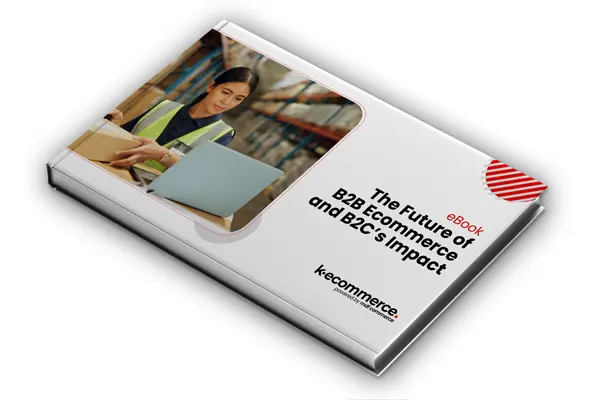
Why Consumer Price Pressure is a Wake-Up Call for B2B Sellers
Laura
Buzin

B2B buyers are closer than ever to the end customer, and everyone is feeling the pressure of rising prices, changing behaviors and unpredictable market forces.
One of the biggest drivers behind this shift? Tariffs. As global trade policies shift, tariffs add volatility to pricing models and increase cost pressures across the supply chain, but that impact doesn’t stop at the consumer level. We see price pressure affecting retailers, distributors, and ultimately, B2B sellers, who are asked to do more with less.
In this blog, we’ll break down new consumer data, explore shifting expectations for manufacturers and distributors, and highlight how B2B sellers can respond faster and smarter with the right infrastructure.
The Impact of Rising Prices on Consumer Behavior
K-ecommerce recently surveyed 1,000 U.S. adults to better understand how economic pressures shape consumer habits. The data revealed:
- 84% are concerned tariffs will continue to drive prices up in 2025
- 78% have already changed how they shop
- 44% are cutting back on overall spending
- 36% are delaying non-essential purchases
What This Means for B2B Sellers
The past few months have shown that global tariff policies have changed frequently and drastically.
“When consumers change their behavior, there are impacts throughout the entire supply chain,” said Michael Netto, General Manager at k-ecommerce. Retailers adjust. Distributors renegotiate. And manufacturers need to respond in real-time.”
That’s a tall order for many B2B sellers. Most legacy systems weren’t built to handle frequent price or catalog updates, let alone customer-specific pricing or mid-year contract renegotiations. Manual processes create bottlenecks, and static pricing doesn’t reflect the real cost of doing business.
The result? Missed opportunities, delayed responses and frustrated buyers. These aren’t issues we can ignore: Manufacturers need a better way to manage ecommerce.
Forward-Looking Companies are Adapting
Netto noted that manufacturers are rethinking B2B payment terms in 2025, moving away from blanket price hikes and adopting targeted surcharge models instead. These allow for more precise, transparent pricing tied to actual cost fluctuations—a strategy that helps preserve both margin and trust.
But flexibility requires the right infrastructure. “Static databases and disconnected tools can’t keep up,” said Rich Fowler, Partner Channel Manager at k-ecommerce. “Manufacturers go into their systems weekly, even daily, to adjust pricing and inventory based on real-time demand and supply conditions.”
How k-ecommerce Helps B2B Teams Succeed
Designed specifically for B2B sellers using Microsoft Dynamics and Acumatica, the platform syncs seamlessly with your ERP and reduces the friction of managing pricing, catalogs, and customer interactions without overwhelming your IT team.
“Our focus has always been on unburdening busy teams,” said Netto. “With deep ERP integration and built-in B2B tools like multi-catalog support, quick order entry and customer-specific pricing, our clients can update their stores, fulfill orders and get paid faster with fewer errors and workarounds.”
Bottom Line: Agility Builds Trust
Nearly 40% of consumers said they’d view a brand more positively if it communicated price changes. Yet only 14% currently hear those messages. Transparent, responsive sellers will stand out.
In a market where volatility is the norm, responsiveness could be the difference between leading and lagging behind.
“Stay sticky with your customers,” Fowler advised. “Communicate. Demonstrate your expertise. And partner with vendors who understand the B2B ecommerce industry, not just your website.”
Ready to respond faster?
Learn how k-ecommerce can help your team stay resilient in a shifting economy. Schedule a demo today.


